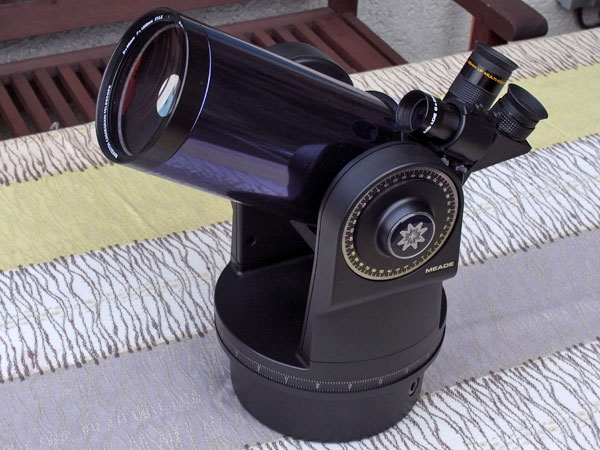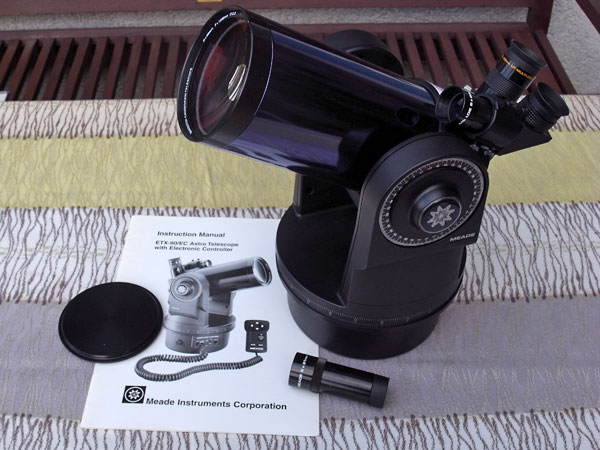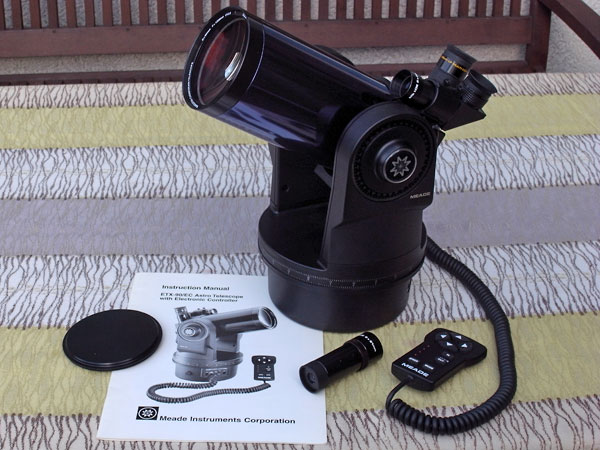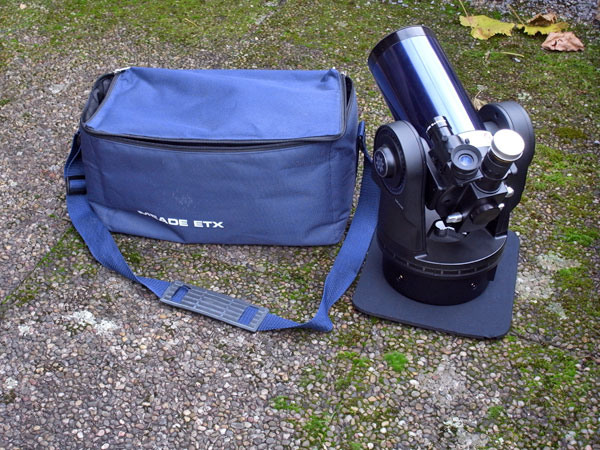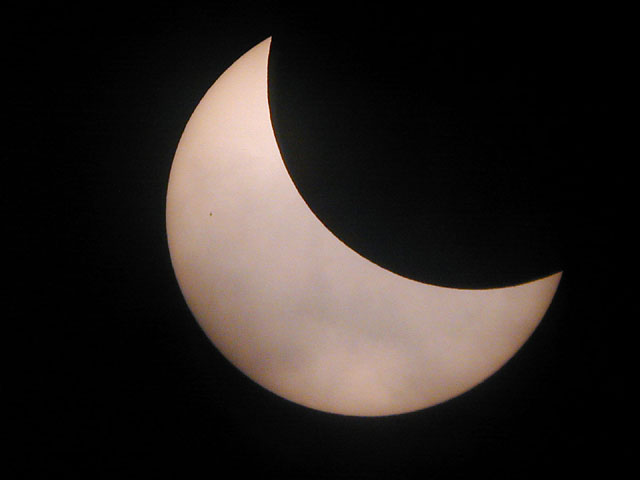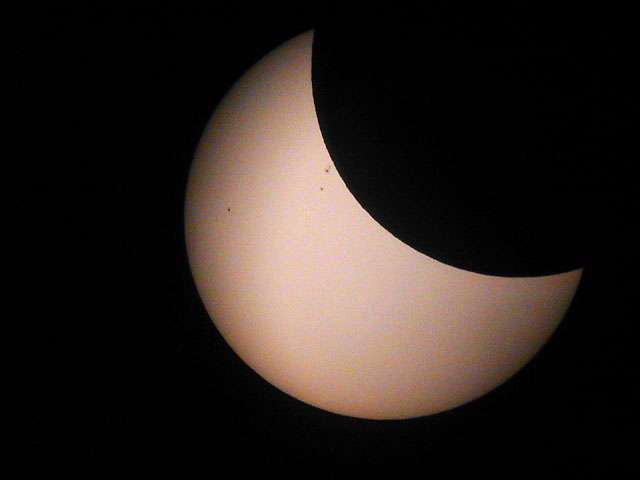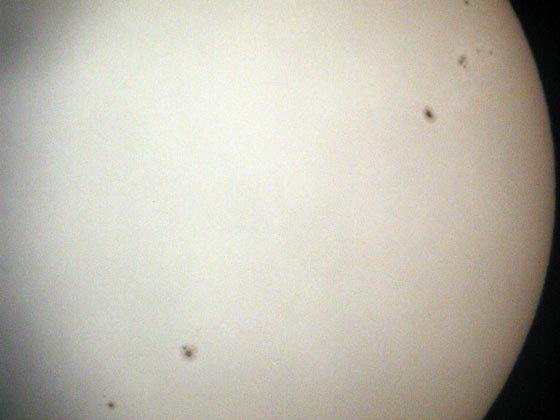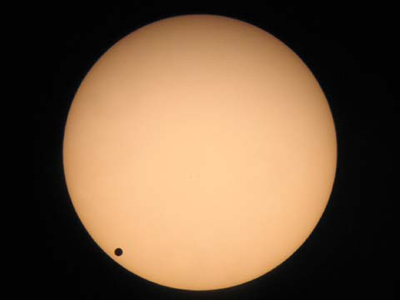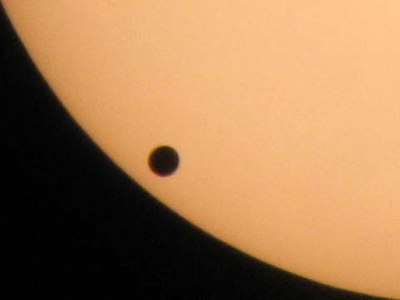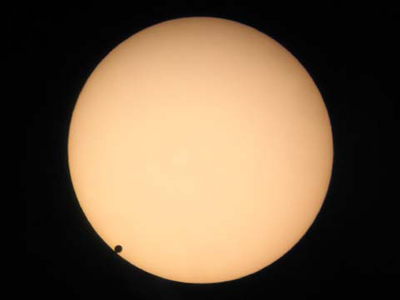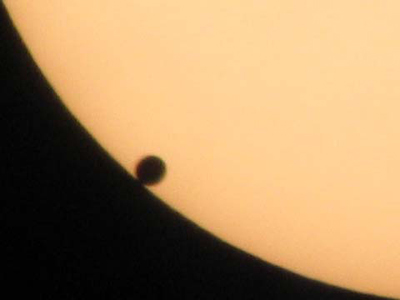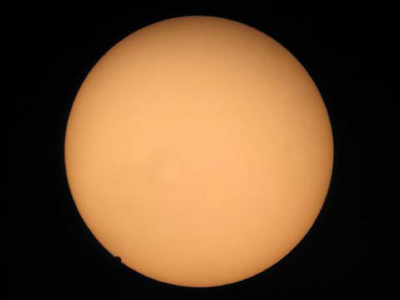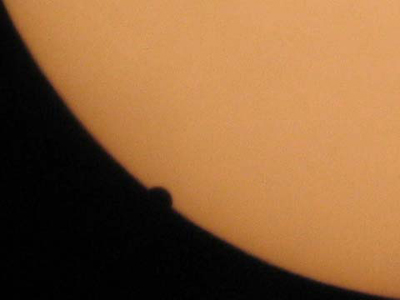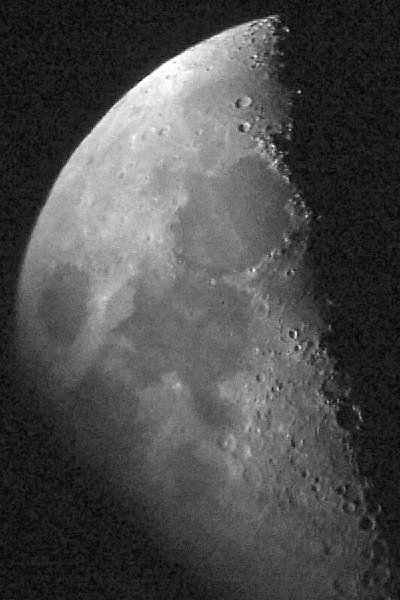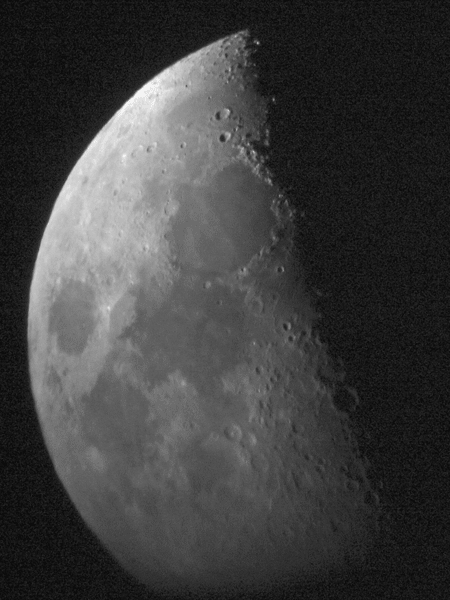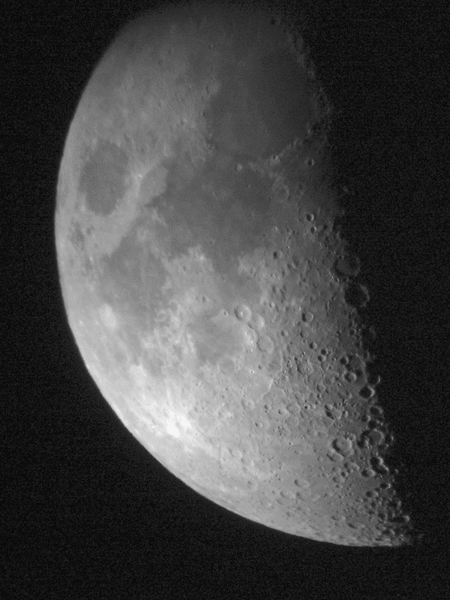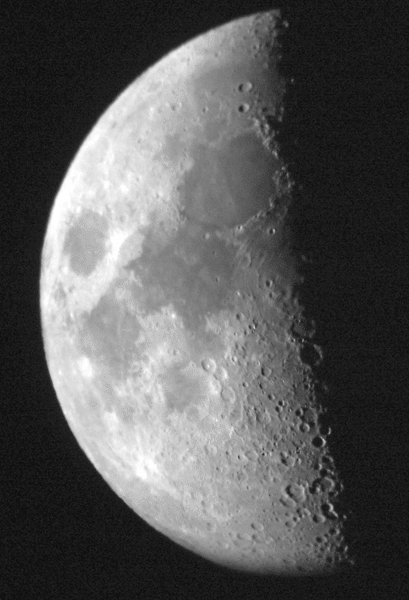Meade ETX-90C Information (3.5" Maksutov-Cassegrain)
Motivation | Look | Visited Sky Objects | Photo Attempts | Did You Know? | Links | Appendix: Data
Archive
On this page, I present some information about my former telescope, a Meade ETX-90EC (purchased in 1999 at the Pittsburgh airport), which is a Maksutov-Cassegrain type.
See the appendix for the data. See also page Meade ETX-90EC Equipment and Michael Weasner's ETX archive: www.weasner.com/etx/menu.html
| Note: I sold the telescope at the end of 2009. I therefore can no longer report any experiences with this telescope. |
Motivation
Why did I buy the Meade ETX-90EC telescope and for what purpose? I bought the EXT-90EC in the last millennium, after I had followed Michael Weasner's Website on this telescope for a long time and got a desire for it. Unfortunately, the telescope was difficult to obtain in Germany, and so I took the opportunity of a trip to a conference in the USA to buy it at the airport in Pittsburgh. In Frankfurt, I had to declare it at the customs, which was quite expensive... After that, I bought a lot of accessories for this scope.
I think that despite all the information on Michael Weasner's Website I did not really know the strengths and weaknesses of this telescope. But it was new, chic, small, and even motorized (even with GoTo control). I first had to learn in practice that it is rather a telescope for observing planets and the moon or sun and less suitable for comets and deep sky objects (although I did not even know then what DSOs are...).
Finally, I sold the ETC-90EC (very cheaply) because of the poorly working motor and GoTo controls and the failures at a comet and the Andromeda galaxy. The total solar eclipse in 1999 and the Venus transit in 2004 were certainly my highlights with this telescope. I also was able to observe sun spots well (I had bought a sun filter for the ETX).
Look
Some views of my Meade ETX-90EC. For more photos of my equipment and respective comments, see here.
Visited Sky Objects
I visited the following sky objects with the Meade ETX-90EC:
- Moon, Sun (total eclipse, spots; also with Venus transit)
- Jupiter (with moons), Saturn (with ring), Venus (phases were barely recognizable), Mars (not well...)
- M 31 (not well...), Milky Way
Highlights
Photo Attempts
1999: Total Eclipse of the Sun (August 11, 1999)
|
More of the sun becomes visible, a large sun spot can be recognized |
Most of the sun is already uncovered, more sun spots are visible |
2000: Sun Spots
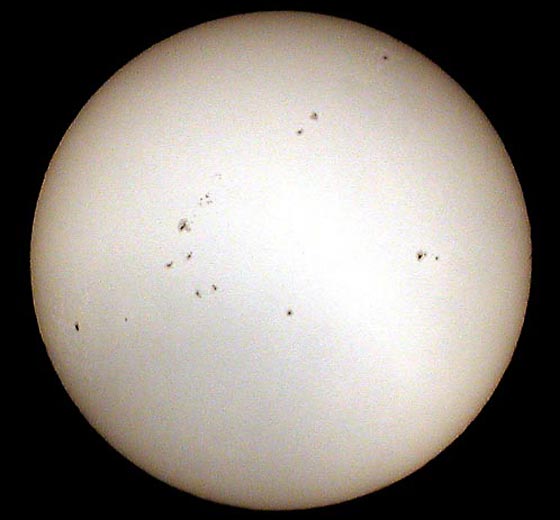 |
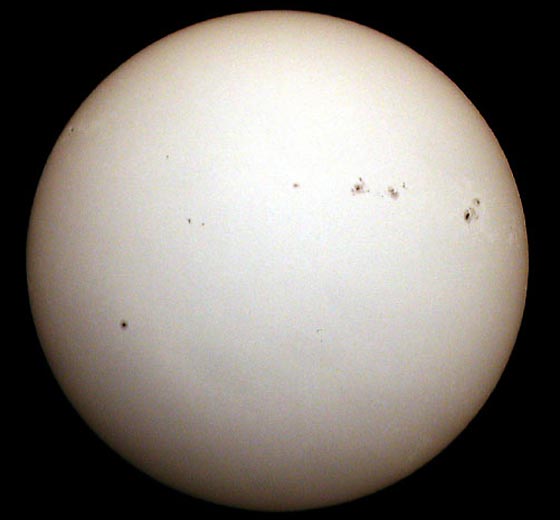 |
|
June 12, 2000: Never saw so many sun spots! The zodiac light, however, did not appear, even though it was announced in the news... |
June 17, 2000: Nearly a week later, fewer sun spots but larger ones could be observed. |
|
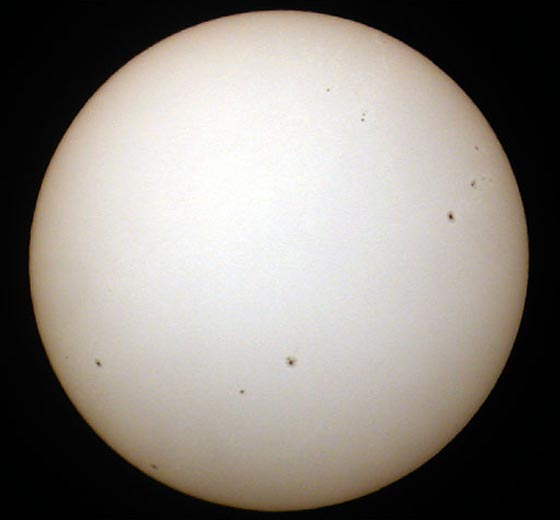 |
|
|
July 2, 2000: Two weeks later, still fewer sun spots could be observed. |
Section taken with the 26mm eyepiece. |
2004: Venus Transit of the Sun (June 8, 2004)
|
Venus transit coming to an end... |
Ditto, in 1:1 scale |
|
Venus approaches the edge of the sun: there is no visible "drop effect" |
Ditto, in 1:1 scale |
|
Venus moves through the edge of the sun and leaves it |
Ditto, in 1:1 scale |
2009: Moon
 |
 |
||
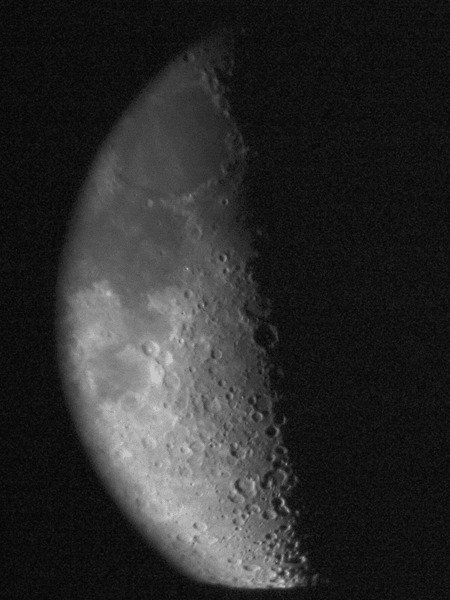 |
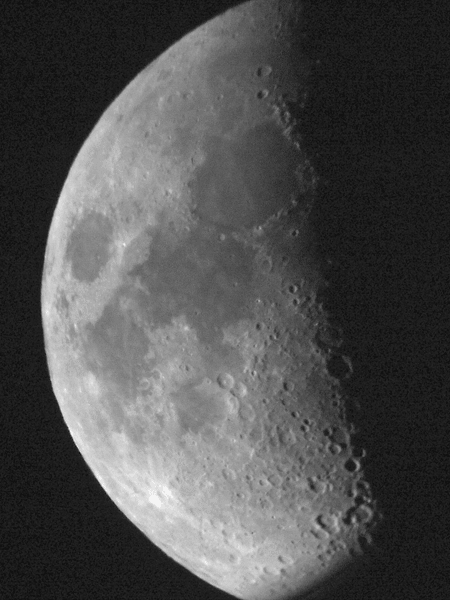 |
||
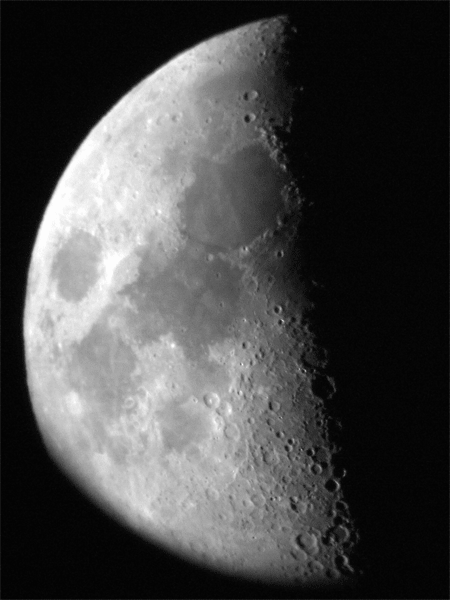 |
|||
October 25, 2009 - Meade ETX 90 EC and Ricoh GX200 |
|||
Did You Know?
Here, I answer a couple of questions that ETX and astronomy beginners might have (experts will probably shake their heads...).
Transportation and Weight |
|
With its nearly 6 kg weight the ETX-90EC is still transportable. However if you have to carry it for several kilometers when going to an observation location, you will surely feel its weight on your shoulder. I bought the ETX because it can be quickly assembled and is transportable - these reasons are still valid for me, although I do not own it any more. |
Assembly |
|
When I was in a hurry, I simply put the ETX on a table (or even a small table). The view was shakey, but this method was fast... I owned a small tripod with three single legs to be screwed into the telescope. This tripod is needed if you use the Autostar computer; however, I rarely used this tripod. With the Autostar computer it was even worse: I never used it for real observations. |
Viewfinder |
|
As I had problems with the viewfinder, I bought the right-angle viewfinder (it replaces the standard viewfinder). This was more convenient for me. |
Find Objects and Spot Them |
|
You wouldn't believe how hard it is to find and track objects on the nightly sky with a telescope. Therefore, it is important to orient the telescope at least roughly towards the object(s) to be observed (the Autostar computer would do this for you if you did a correct alignment procedure). Then I use the viewfinder, which has a magnification factor of five and makes it easier to search larger areas, to spot, and center the object. Be sure to align the viewfinder correctly - I did not care to do that at first... |
How Do Objects Look Like in the Telescope? |
|
Many beginners do not know that, depending on the telescope type, objects are seen upside down and mirrored. This, too, makes it harder to find and track sky objects. You have to get used to the "correct" movements. The ETX shows objects right-side-up, but reversed left-for-right. You can correct this with an optional 45° erecting prism. |
Speed |
|
Beginners also do not expect that objects are moving that fast through the field of view. The larger the magnification, the faster they move. If you want to show someone a sky object, he or she has to hurry... |
Automatic Tracking |
|
Automatic motor-driven tracking of objects is only possible if the ETX is polar-aligned using the table tripod or any other tripod. As I never aligned the ETX correctly, objects moved quickly out of sight. PS: I once tested the aligment procedure and automatic tracking (see description below), but it did not work... |
Quick Orientation, Motor Control |
|
First, I aligned the telescope by hand and then did the fine alignment with the handbox. When doing so, I simply placed the telescope on a table (Altazimuth mount) and used it more or less like a Dobsonian telescope. The motor control of my ETX was very imprecise and had slack. |
| Placement, Mounts, Alignment | Altazimuth-Mount - the Simplest Way of Placing The simplest and most convenient way of placing the ETX is to place it with its bottom "normally" on a table. This is called an "altazimuth" mount in technical jargon. The same effect is achieved by screwing the telescope to a tripod with the help of the thread in the base plate. With this mount you can move the telescope in vertical and horizontal direction - either by hand or ny motor using the handbox. This mount is suitable for terrestrial and occasional sky observations, but does not allow automatic tracking. Equatorial Mount - Polar Alignment For extended sky observations the equatorial mount is recommended. This mount takes into account that the star movements represents a combination of a vertical and a horizontal movement. By aligning one of the mechanical axes of the telescope with the pole star (Polaris), it is possible to track celestial objects solely by moving on the other axis (instead of along two axes) - which then also is done using a motor. An equatorial mount with an axis pointing to the celestial pole is called "polar alignment." The ETX can be polar aligned using the tabletop tripod or other tripods. For an automatic motor tracking, an alignment procedure has to be run after the mounting. Polar Alignment with the Table Tripod in Central Europe First of all, you need to know the latitude of the observation site. Mühlhausen/Kraichgau, where I live, has a latitude of about 49° (Stuttgart has 48° 46', Karlsruhe 49° and Heidelberg 49° 25'). Thus it is located between the conditions for using the standard leg or the leg for higher latitudes: Standard leg: Leg for higher latitudes: In the case of the standard leg, its length is adjusted so that the locking screw on the scale points to the latitude of the observation site. Then, the telescope is aligned with the tube pointing upwards (declination 90°) on Polaris (at least approximately). In the case of the leg for higher latitudes, one adjusts its length withouta scale so that the telescope with the tube pointing upwards (declination 90°) points to Polaris (at least approximately); to do so, you have to peer along the telescope to Polaris or try to find it in the telescope. After alignment, the tripod should not be moved. Otherwise the alignment will be lost again. The telescope has, of course, to be aligned on its axes to the desired objects. PS: For special cases, there is a more precise alignment procedure. |
|
Eyepieces |
|
The ETX was sold together with a 26 mm Ploessl eyepiece, which is a good general purpose eyepiece. However, if you want to see the complete moon or sun (with sun filter or projection screen) you need an eyepiece with a larger field of view, for example a 40 mm or a wide-angle eyepiece. When using a 40 mm eyepiece, there is the problem of vignetting that increases with a person's age. I do not know, whether this is also true for wide-angle eyepieces. If you need higher magnifications, you have to use eyepieces with a shorter focal length (9-12 mm). However, image quality decreases with magnification so that the outcome may not be worth the cost for an additional eyepiece. High quality eyepieces may cost several hundred dollars, so do not underestimate the additional cost. |
The ETX-90 Is Well Suited to... |
|
You can observe well: the moon (up to about half moon), the sun (with sun filter or projection screen), Jupiter, and Saturn. Mars and Venus can be recognized as disks, Venus phases are barely recognizable. |
The ETX-90 Is not Suited to... |
|
Because of its high focal ratio, the ETX-90 (and its siblings) is not suited to observing deep sky objects, such as galaxies, star clusters, and nebulae (a. o. Messier objects). Use Newton telescopes with focal ratios between 1:5 and 1:6 for this purpose. I therefore sold my ETX-90 in 2009 and bought a large (Meade 10" Dobson Lightbridge) and a small (Sky-Watcher Heritage P130) Dobsonian telescope (and later further ones...). In 2016, however, I bought a similar Maksutov-Cassegrain tube (Sky-Watcher Skymax-102 OTA) - so to speak as a "specialist" for the moon and the planets. |
Competition |
|
The Celestron NexStar 5 telescope was comparable to the ETX-125, more expensive, but seemed to be more powerful. These days, there are many options from Sky-Watcher, Orion, Celestron and others. In 2016, I bought a 4" Maksutov-Cassegrain tube from Sky-Watcher, the Skymax-102 OTA. If you want to observe deep sky objects, consider buying a Dobsonian telescope. That's what I did in 2009 and in 2010 (and later...)! |
Links
- Company website, USA: www.meade.com
- Meade ETX: www.meade.com/products/telescopes/etx.html
- The info source for my telescope Meade ETX 90/EC was: www.weasner.com and is now available as an archive: www.weasner.com/etx/menu.html
Appendix: Data for Maksutov-Cassegrain Telescopes
Meade |
Sky-Watcher |
|||||
| Telescope | ETX-90EC | ETX-105EC | ETX-125EX | Skymax-90 OTA* | Skymax-102 OTA | Skymax-127 OTA |
| Optical Design | Maksutov-Cassegrain |
|||||
| Primary Mirror Diameter | 96 mm (3.78") | 116 mm (4.56") | 138 mm (5.43") | 90 (3.5") | 102 mm (4") | 127 mm (5") |
| Clear Aperture | 90 mm (3.5") | 105 mm (4.13") | 127 mm (5.0") | |||
| Focal Length, Focal Ratio | 1250 mm, f/13.8 | 1250 mm, f/13.8 | 1900 mm, f/15 | 1250 mm, f/13.9 | 1300 mm, f/12.7 | 1500 mm, f/11.8 |
| Near Focus (approx.) | 11.5 ft. (3.5 m) | 15 ft. (4.6 m) | 15 ft. (4.6 m) | |||
| Resolving Power (arc secs) | 1.3" | 1.1" | 0.9" | 1.3" | 1.15" | 0.91" |
| Limiting Visual Stellar Magnitude | 11.7 mag | 12.1 mag | 12.5 mag | 11.6 mag | 12.7 mag | 13.3 mag |
| Light Gathering Power | 165.3 | 225 | 329.2 | 165.3 | 212.3 | 329.2 |
| Maximum Practical Visual Power | 325 x | 420 x | 500 x | 180 x | 204 x | 254 x |
| Optical Tube Dimensions (dia. x length) | 4.1" x 11" (10.4 cm x 27.9 cm) | 4.88" x 12.9" (12.4 cm x 32.8 cm) | 5.75" x 14.2" (14.6 cm x 36 cm) | 10.4 cm x 24 cm | 11.6 cm x 27 cm | 14.4 cm x 33 cm |
| Telescope Net Weight | 7.8 lbs (3.5 kg) | 13.5 lbs. (6.1 kg) | 15.2 lbs. (6.9 kg) | 1.4 kg (OTA) | 1.9 kg (OTA) | 3.4 kg (OTA) |
Italic and dark red: telescopes that I owned; black: for comparison; *) similar to the 90 mm tube that is delivered with the Virtuoso mount.
| 17.11.2024 |

